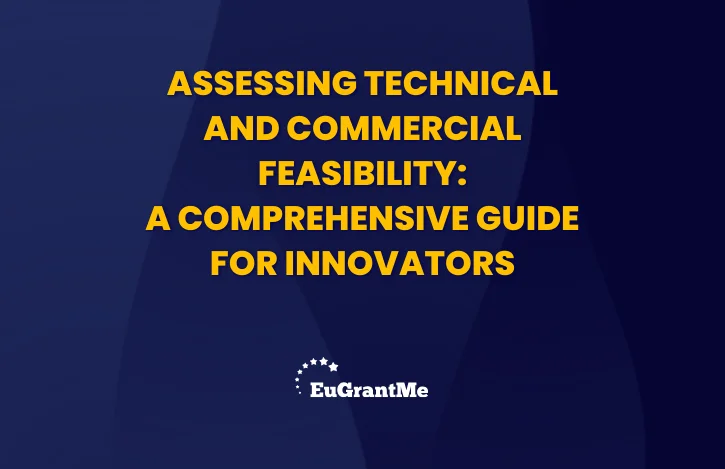Innovation is the cornerstone of progress, driving advancements across diverse industries and sectors. Yet, not all innovative ideas translate into feasible and viable projects. To navigate the complex landscape of innovation effectively, it’s crucial for innovators to conduct thorough assessments of both technical and commercial feasibility. In this comprehensive guide, we’ll delve into the intricacies of feasibility assessment, equipping innovators with the knowledge and tools needed to validate their ideas and propel their projects towards success.
Understanding Technical Feasibility
Technical feasibility assessment forms the bedrock of any innovation project, encompassing an evaluation of whether a concept can be developed, implemented, and operated as envisioned. This assessment involves a meticulous examination of technological readiness, resource requirements, and potential challenges or limitations. At the outset, it’s essential to define clear project objectives and specifications, outlining the desired outcomes and functionalities of the proposed innovation.
Subsequently, assess the availability of requisite resources, including expertise, technology, materials, and infrastructure, to support the development and implementation phases effectively. Anticipate and address any technical risks or uncertainties that may emerge during the project lifecycle, devising robust mitigation strategies to ensure smooth progress.
By conducting a comprehensive technical feasibility assessment, innovators can identify potential hurdles early on and make well-informed decisions regarding the feasibility of their innovation.
Evaluating Commercial Feasibility
In parallel with technical considerations, evaluating commercial feasibility is paramount to determining the market potential and financial viability of an innovative idea. Commercial feasibility assessment involves a multifaceted analysis of market dynamics, customer preferences, competitive landscape, and revenue generation potential. Kickstart the assessment process by conducting thorough market research to gauge the demand for your product or service, understand the competitive landscape, and identify existing alternatives or substitutes. Delve into the intricacies of your target market segments, assessing their receptivity to your innovation and willingness to pay.
Crucially, evaluate the scalability and sustainability of your proposed business model, analysing revenue streams, cost structures, and long-term profitability prospects. By conducting a rigorous commercial feasibility assessment, innovators can gain invaluable insights into the market viability of their innovation, enabling them to devise robust commercialisation strategies and secure sustainable growth.
Integrating Technical and Commercial Assessments
While technical and commercial feasibility assessments are often conducted as distinct processes, it’s imperative to recognise the symbiotic relationship between these dimensions and integrate them seamlessly. Technical feasibility lays the groundwork for commercial success, ensuring that the innovation can be developed and implemented as envisioned.
Conversely, commercial feasibility provides validation of market demand and revenue potential, guiding decisions on resource allocation and investment priorities.
By harmonising technical and commercial assessments, innovators can gain a holistic perspective on the feasibility of their project and devise strategies to maximise its likelihood of success. This integration may entail iterative refinement of the innovation concept, adjustments to business models or go-to-market strategies, or exploration of alternative pathways to commercialisation. Ultimately, the goal is to identify the most promising opportunities and allocate resources judiciously to drive successful innovation projects.
At Last
Navigating the intricacies of technical and commercial feasibility is essential for innovators seeking to transform their ideas into successful ventures. By embracing a systematic approach to assessment and integration, innovators can mitigate risks, capitalise on opportunities, and drive impactful innovation. As the innovation landscape continues to evolve, the importance of robust feasibility assessment cannot be overstated. By leveraging insights from both technical and commercial evaluations, innovators can refine their strategies, adapt to changing market dynamics, and position their projects for sustained success.
In conclusion, the journey from concept to commercialisation requires a holistic understanding of feasibility, encompassing both technical and commercial dimensions. Through rigorous assessment, integration, and strategic planning, innovators can navigate the complexities of the innovation landscape with confidence and clarity. By embracing feasibility assessment as a cornerstone of their innovation process, innovators can unlock the full potential of their ideas and make meaningful contributions to society, industry, and the broader economy.
At EuGrantMe, we are passionate about fostering innovation and empowering ambitious minds to flourish. Our mission revolves around providing top-notch grant writing services for the EIC Accelerator and Horizon grants in Europe, enabling our customers to unlock the full potential of their ground-breaking ideas.
Do you have a project to turn into reality?
Contact us!


